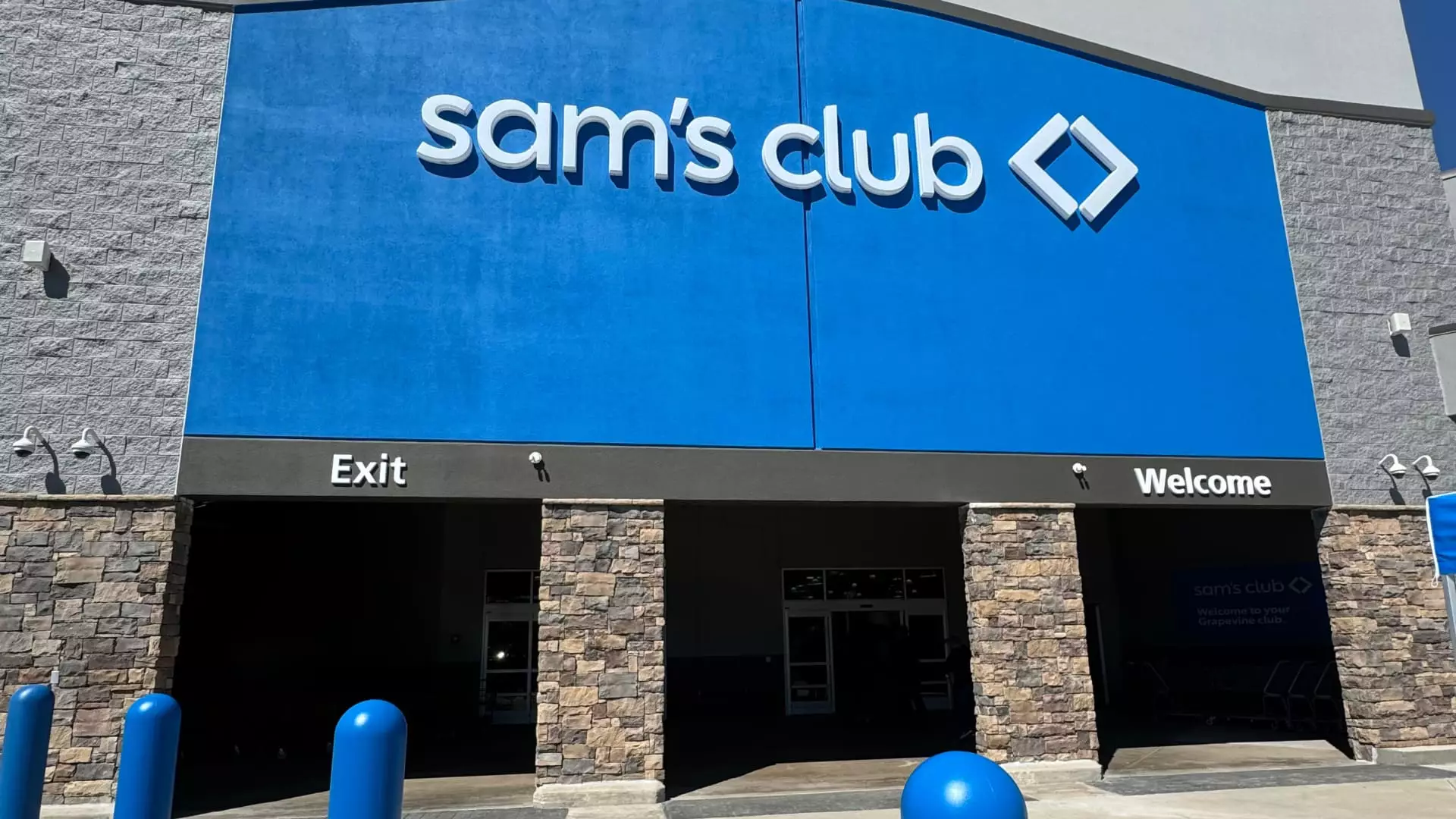In an era where technology is reshaping the retail landscape, Sam’s Club is taking a bold step forward with its newly unveiled all-digital store in Grapevine, Texas. This groundbreaking initiative aims to redefine the shopping experience by eliminating traditional checkout lanes entirely. Instead, the store features a blend of high-end products, including a dazzling blue Mercedes-Benz SUV and modern furniture, alongside a fully integrated mobile application called Scan & Go. Scheduled to open in mid-October, this store represents not only a shift in consumer convenience but also a significant strategic pivot for the Walmart-owned brand.
The essence of this innovation lies in the integration of digital engagement within the shopping process. Customers will utilize their smartphones to effortlessly scan items as they navigate the aisles, adding a layer of convenience that holds the promise of a seamless shopping experience. This evolution reflects the broader trend in retail towards technological solutions that enhance efficiency and appeal to a tech-savvy customer base.
Transforming the Shopping Environment
Historically, Sam’s Club has been perceived as the technologically inclined sibling of its parent company, Walmart. This reputation is bolstered by features like Scan & Go, which has already gained traction among members as a solution to one of the industry’s most significant pain points: checkout queues. By creating an environment where customers can shop without the hindrance of standing in long lines, Sam’s Club is positioning itself as a forward-thinking alternative to its main competitor, Costco.
The Grapevine location serves as a prototype for future stores, allowing Sam’s Club to test experimental features that may later be rolled out across its portfolio. As CEO Chris Nicholas articulates, the aim is to forge a retail experience that not only meets current consumer expectations but also anticipates future shopping habits. A critical aspect of this evolution is the enhanced space designated for online orders, reflecting an increasing consumer shift towards e-commerce.
While Sam’s Club and Costco operate on similar ground in terms of membership models, their market positions heavily differ in revenue generation. Costco has long been regarded as the reigning champion of the warehouse club sector, reportedly generating double the net sales of Sam’s Club. However, Sam’s Club is aggressively adapting its strategy to close the competitive gap. Recent enhancements include consolidating its private label offerings into the Member’s Mark brand and streamlining inventory management by reducing the variety of products available.
Moreover, Sam’s Club is committed to fostering customer-centered innovation. The recent introduction of a sushi preparation station demonstrates a commitment to upgrading the in-store experience. By merging culinary elements into the shopping experience, Sam’s Club is hoping to attract new members and retain existing ones by focusing on customer engagement and satisfaction.
E-commerce has emerged as an essential component in the modern retail equation, and Sam’s Club is not ignoring this fact. The company reported impressive e-commerce growth of 22% year-over-year, emphasizing the successful integration of online and offline shopping experiences. With 1 in 3 members currently using the Scan & Go feature regularly, there is a significant indication that customers are receptive to this shift in shopping methodology.
To bolster this digital transformation, the implementation of advanced technologies such as automated exit systems, powered by AI and computer vision, promises to streamline the customer experience further. This technology echoes the successful adoption of similar systems by Amazon, underlining a trend where leading retailers prioritize both efficiency and tech-enhanced experiences.
Navigating Customer Sentiment and Workforce Adaptation
Despite the enthusiasm surrounding these innovations, it is essential for Sam’s Club to address potential customer apprehensions regarding new technologies. Many shoppers may find it challenging to adapt to a fully digital shopping experience. For example, Tiffany Zuniga, a Dallas resident, expressed concerns about the learning curve associated with Scan & Go. While there’s excitement around the new features, the necessity for responsive customer service underscores the importance of maintaining a human touch amidst technological advancement.
Sam’s Club has acknowledged these concerns, ensuring that staff members are available to assist customers as they transition to this new model. Approximately 100,000 workers will see increased wages ahead of the holiday season, reinforcing the retailer’s commitment to its employees while enhancing the shopping experience for customers.
The unveiling of Sam’s Club’s all-digital store marks a significant turning point in the retail landscape. As the boundaries between online and offline shopping continue to blur, Sam’s Club is taking definitive strides towards creating a more integrated, technology-driven retail experience. By merging convenience and high-quality offerings with cutting-edge technology, the company is not just responding to current market demands but is proactively shaping the future of shopping. As the retail environment evolves, it will be intriguing to watch how Sam’s Club navigates the balance between innovation, customer service, and operational efficiency.

